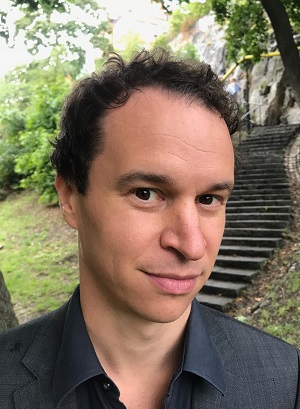Interview with Romain Rumpler

Tell us a bit about yourself and your educational background; what inspired your interest in your field?
I studied mechanical engineering in France (INSA Lyon), completed by a 2-year pedagogy-oriented curriculum in ENS Paris Saclay (formerly ENS Cachan) to become a certified teacher for higher education in France. This also included the possibility to be funded for a PhD which I completed in a joint agreement with KTH, within engineering acoustics at the Marcus Wallenberg Laboratory for Sound and Vibration Research (MWL).
This gave me a taste for research within this field, international collaborations, and academic life in general, which I pursued since my PhD defense in 2012.
Being appointed as an associate professor must be exciting. What are the role responsibilities and what short term plans do you have for your new position?
The Swedish industry has a great need for knowledgeable Noise & Vibration engineers, and I intend to continue contributing to have KTH playing an important role in fulfilling this demand. We also have great societal and environmental challenges in front of us, and the research performed in the groupings I belong to (MWL and the Centre for Eco² Vehicle Design) is very relevant to address some of these, so I am very excited to continue developing my tracks of research in these groupings!
What is your research about?
In short, I have an interest in the research of acoustic materials whose mesoscopic features (cellular topology, periodicity, ...) can be tailored to exhibit interesting macroscopic mechanical properties (wave manipulation, acoustic absorption, transmission, dynamic response in general). This includes research on multifidelity methods in order to efficiently model these materials.
More recently, we have also been conducting research towards a refined dynamic exposure assessment to traffic noise in dense population areas.
What are the biggest challenges your work/research combats?
Interestingly, working with noise and vibration seeks to address challenges in terms of engineering performance but also health impact, so affecting both products and humans.
Are you planning to develop your research in new directions?
There are plenty of challenges to be addressed in the ongoing directions of research, and I’d rather like to consolidate these trends, building upon the increasing computational capacity, the possibilities offered by the digitalization of the society, or the complementary prospects opened by data-driven methods.
What do you view as your most important research accomplishment?
Maybe not mine to say, but if I would pick one, I’d say that in our group and the teams we are collaborating with, we have made significant steps towards a very detailed, dynamic assessment of population exposure to noise. Aiming for near real-time assessment also opens the door for a range of technological and regulatory dynamic solutions to address the problem of exposure to noise.
Do you see a way of combining your research with your teaching duties, or do you consider the two roles separate from each other?
In our discipline, research is very closely linked to our teaching duties as many of the projects we have are of direct interest and relevance to our students.
What advice would you give to youngsters interested in becoming scientists?
First engage yourself in a topic / an area you really like, surround yourself with motivating colleagues, and be prepared for the journey not to be all smooth.
How could we attract more young minds into the field of sciences? Are there any actions taken by your work environment about it?
I personally like to occasionally present some of the research activities I’ve been involved in to high school students and getting them engaged in a follow-up Q&A session.
Is it important for you to communicate your research to the world? If yes, why and how do you do that?
I think it is part of our duties, and we have been doing that through popular science articles, interviews (TV, newspapers, podcasts, ...), press release whenever we have significant results to communicate, and direct contact with citizens in connection with testbed projects.
Text: Elina Charatsidou
